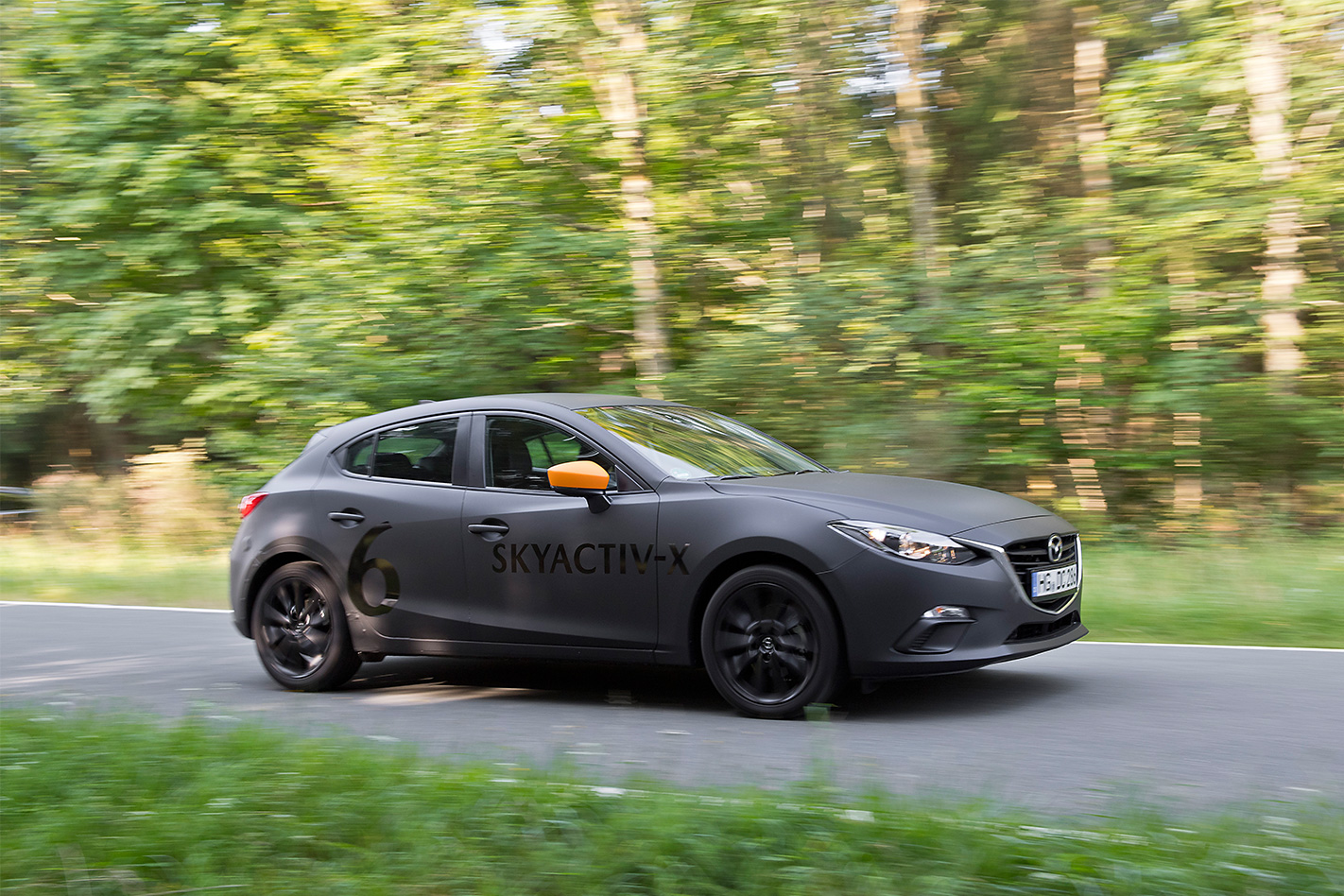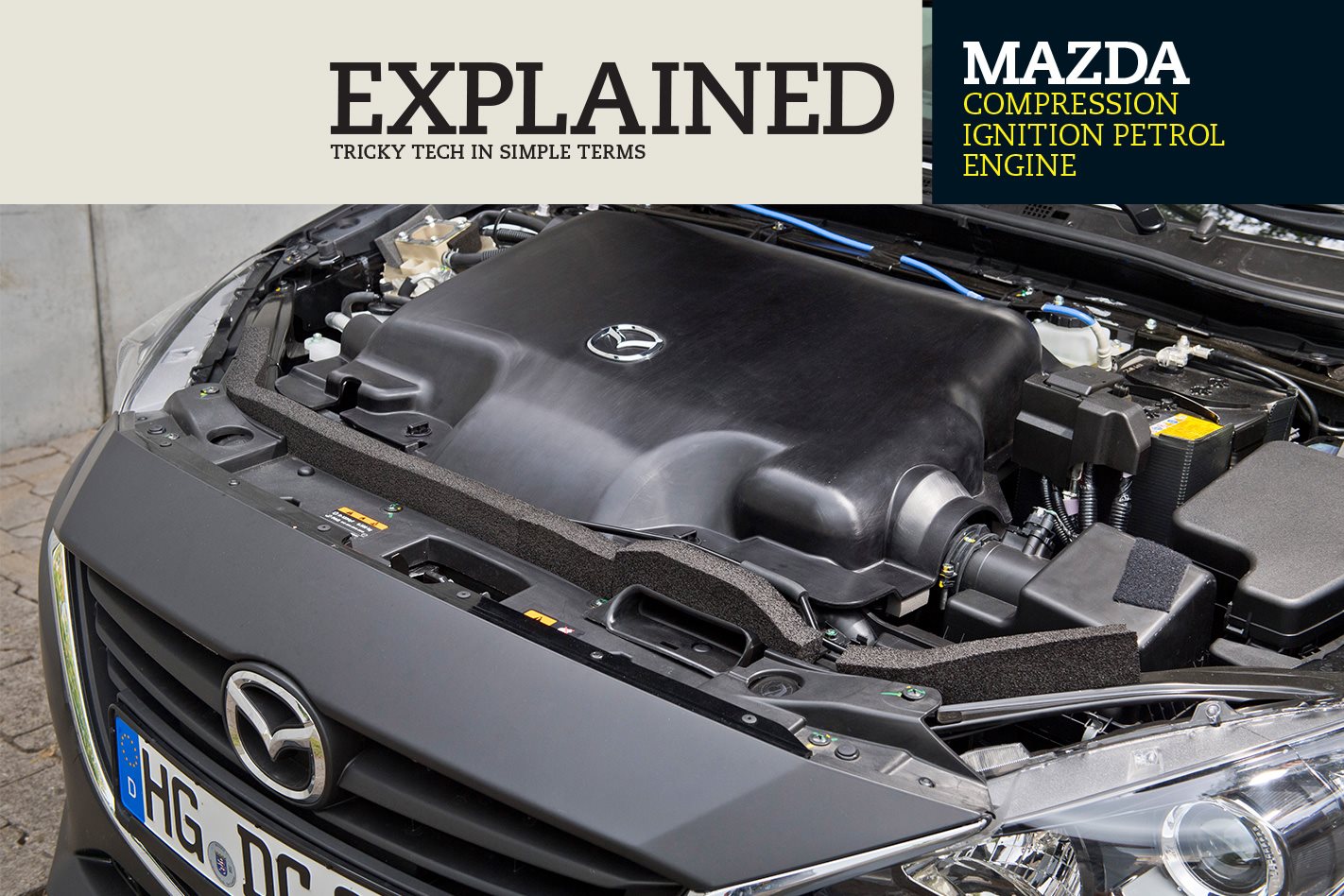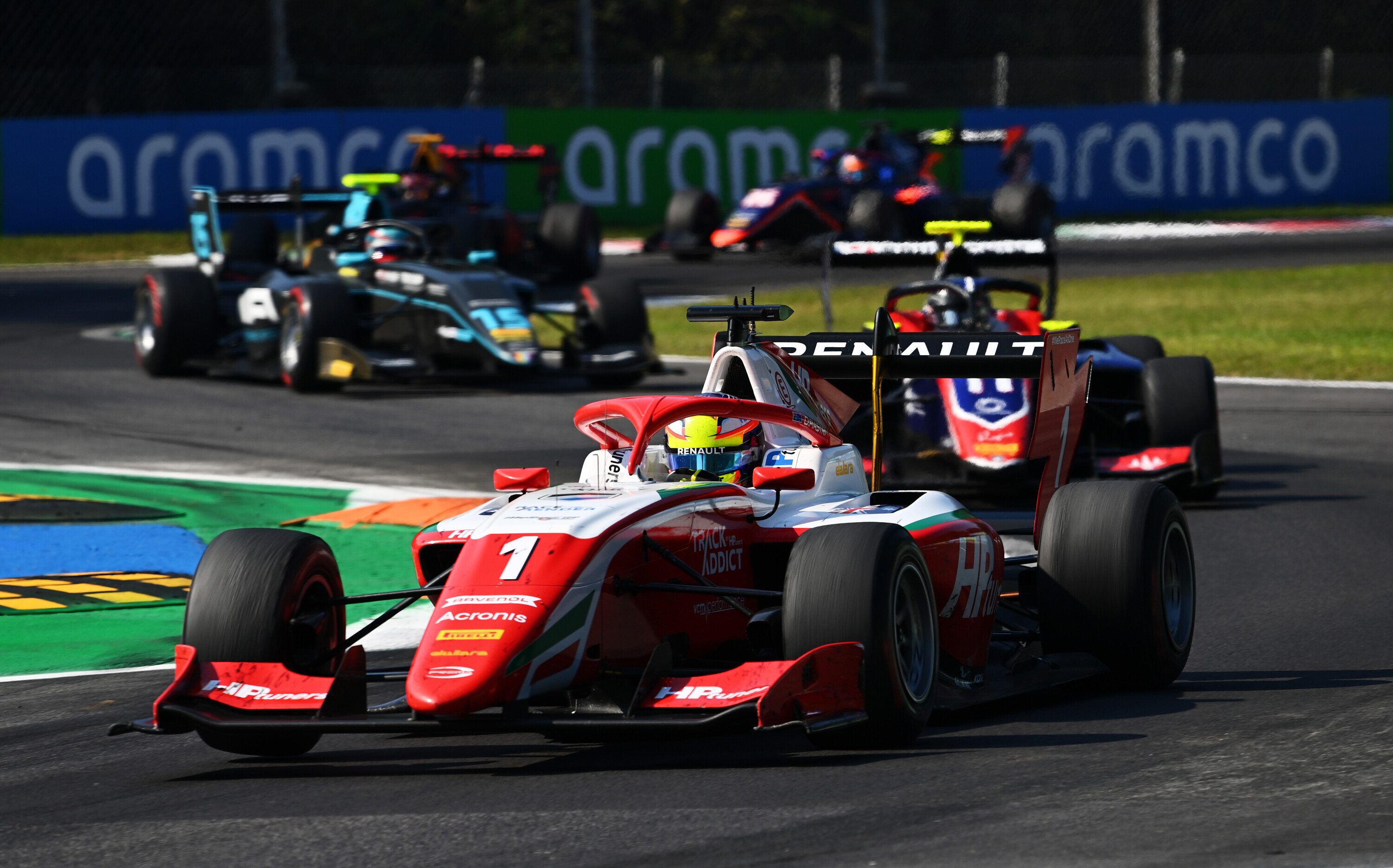What is it?
Mazda’s latest interpretation of the petrol engine, which adopts the compression-ignition principle of a diesel engine. Wearing a new SkyActiv-X brand, the family of engines will start appearing under the bonnets of production models within three years.
How does it work?
Like a conventional petrol engine, fuel and air is introduced to the cylinder before being compressed by the rising piston. But where spark-ignition petrols trigger the combustion process with a timed spark, a pure compression ignition system would allow the mixture to spontaneously ignite from the increase in density and heat generated by compression.
Many manufacturers have tried this and failed. Mazda’s innovation is to use the spark plug as a controller in the combustion process.

Why does it matter?
Until now, diesels have maintained an efficiency advantage over petrol engines thanks in part to their ability to burn very ‘lean’ mixtures of fuel (many parts more air to diesel), but Mazda says its SkyActiv-X engine will match a diesel’s efficiency, with a 30 percent improvement over spark petrols without compromising on petrol driving characteristics.
While the continual evolution of electric powertrains threaten to make the internal combustion engine redundant, Mazda’s technology could instead extend its relevance.

When there is sufficient air to completely burn all of the present fuel, the air/fuel ratio is termed stoichiometric.
In petrol engines this is about 14.7 parts of air to one part fuel, but Mazda’s compression ignition engine can run a far leaner ratio (up to 37:1) utilising a supercharger to pile in air at lower revs. Taking advantage of pre-detonation, it also gets better economy on 91 than 95RON fuel.





